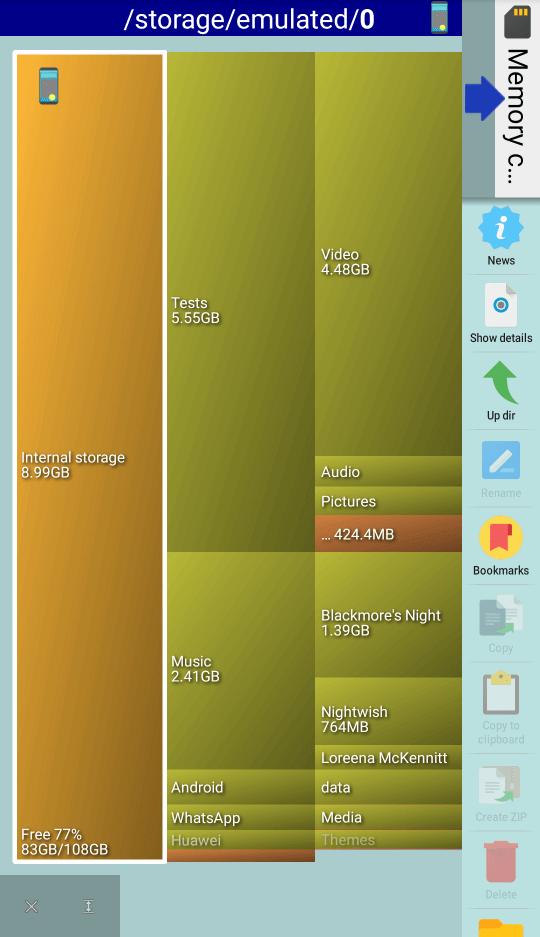Purpose
This feature shows overview of selected storage system, sorted by consumed size. Storage is usually one disk (Internal device storage, or removable SD card) or other logical storage that has some fixed total space, and files in it that consume the space.
The purpose of this view is to determine which files consume most space on the storage. User can than decide which files are needed and which may be deleted or moved elsewhere, or just to get idea of overall utilization of the storage.

Organization
All files and folders in storage are sorted by their size in hierarchical way. Folders show computed size of all files inside of them, files show their own size.
Each column in displayed map represents one hierarchy level (depth) of folders. There is variable amount of rows in each column, each representing folder or file, the height of such box means consumed size.
The map shows boxes with various colors:
- Orange = top level entry representing volume
- Yellow = folder
- Blue = file
- Brown = merged other boxes which have height too small to show them individually
Supported file systems
Disk Map works for device’s local storage (sd card, external sd card, root file system), for Application manager, FTP, LAN, SSH and cloud storage.
Interaction
Disk map may be enabled by pressing button on a folder, from context menu or by key shortcut.
Disk Map is shown inside of pane (left or right) instead of standard file list. This view allows some (but not all) operations possible in normal file list, such as clicking on folder to activate it, long-press to invoke context menu, delete, rename, copy, move, etc. Marking multiple items is not possible.
The view allows zooming vertically (by two finger zoom or double tap). When zooming, more folders/files are revealed. Zooming is also automatic after clicking on a box, so that clicked box is expanded and centered to view.
File may be opened by first clicking them to center them in view, then clicking again to open them.
ⓘ Tip: long-press on Disk-map button to show map only for current folder and child folders (not traversing folders up). This will help you to find big files inside of some folder.